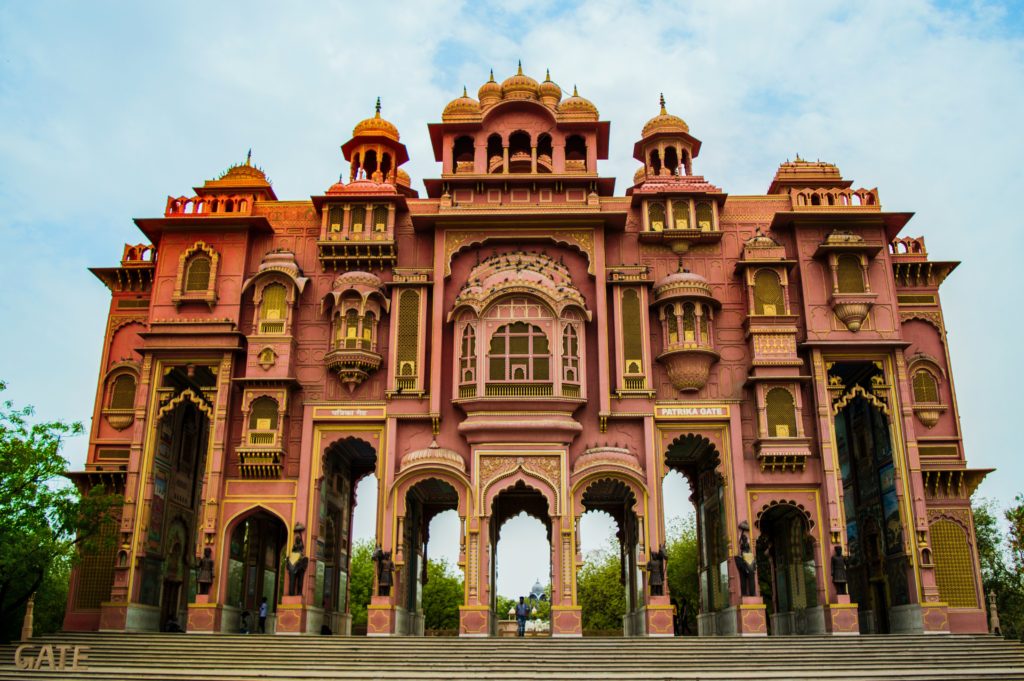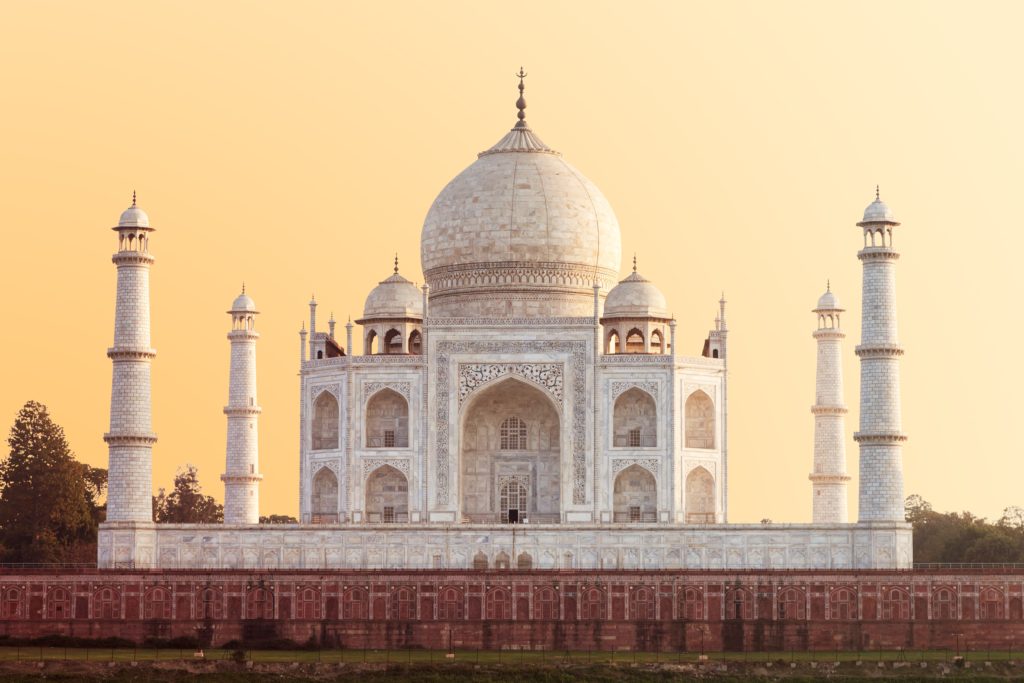Table of Contents
GOLDEN TRIANGLE DELHI-AGRA-JAIPUR-PUSHKAR
GOLDEN TRIANGLE
India’s Golden triangle is a traveler circuit that associates India’s capital, Delhi, Agra, and Jaipur. The Golden Triangle is supposed as a result of the three-sided shape framed by the areas of New Delhi, Agra, and Rajasthan on a guide. The outings as a rule start in Delhi moving south to the site of Taj Mahal at Agra, at that point west, to the desert scenes of Rajasthan. It is regularly conceivable to do the excursion by a mentor or private excursion through most visit administrators.
The Golden Triangle is presently a very much voyaged course, giving a decent range of the country’s diverse landscapes.[1] The circuit is around 720 km by the street. Every leg is around 4 to 6 hours of drive. The Shatabdi express train additionally associates Delhi with Agra and Jaipur.
Delhi
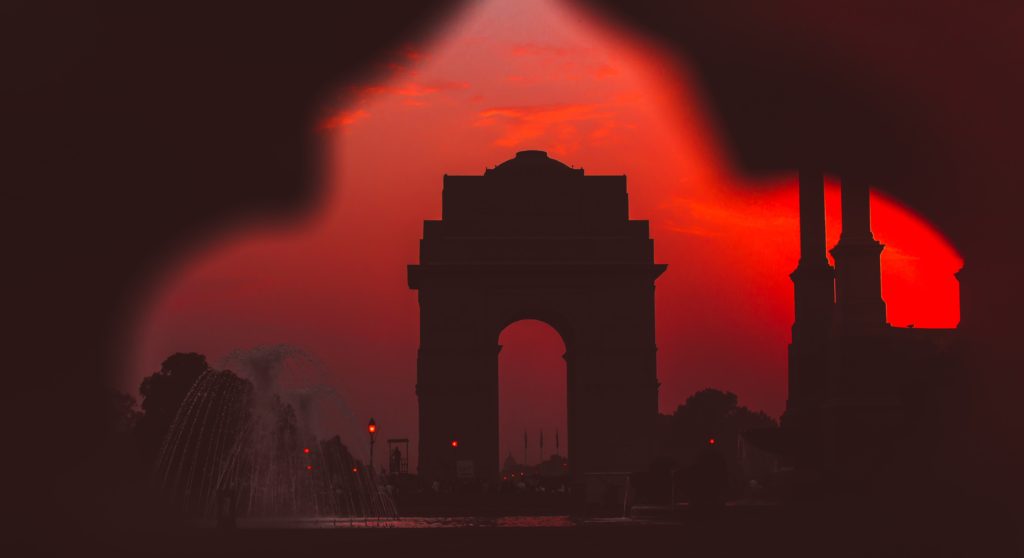
Delhi, formally known as the National Capital Territory (NCT) of Delhi, is a city and an association region of India containing New Delhi, the capital of India. It is lined by the territory of Haryana on three sides and by Uttar Pradesh toward the east. The NCT covers a region of 1,484 square kilometers.
As indicated by the 2011 evaluation, Delhi’s city appropriate populace was more than 11 million, the second-most noteworthy in India after Mumbai, while the entire NCT’s populace was about 16.8 million.
Delhi’s metropolitan territory is currently considered to reach out past the NCT limits, and incorporate the adjoining satellite urban communities of Ghaziabad, Faridabad, Gurgaon, and Noida in a region called the Central National Capital Region (CNCR) and had an expected 2016 populace of more than 26 million individuals, making it the world’s second-biggest metropolitan zone as per the United Nations.
Late gauges of the metro economy of its metropolitan region have positioned Delhi either the most or second-most gainful metro zone of India.
Delhi is the second-most well off city in India after Mumbai and is home to 18 very rich people and 23,000 moguls. Delhi positions fifth among the Indian states and association domains in the human advancement file. Delhi has the second-most elevated GDP per capita in India.
Delhi is of extraordinary chronicled importance as a significant business, transport, and social center point, just as the political focus of India.
Delhi is perhaps the most seasoned city on the planet and has been ceaselessly occupied since the sixth century BCE. All through the vast majority of its set of experiences, Delhi has filled in as the capital of different realms and domains, most quite the Pandavas, the Delhi Sultanate, and the Mughal Empire.
The city has been caught, stripped, and modified a few times, especially during the archaic period, and present day Delhi is a bunch of various urban communities spread across the metropolitan locale.
For a long time Delhi has been a prevailing exchanging and business focus in northern India, and after the 1990s it has arisen as a significant hub in the global corporate and monetary organization.
An association region, the political organization of the NCT of Delhi today more intently takes after that of a territory of India, with its own assembly, high court, and a leader chamber of clergymen headed by a Chief Minister.
New Delhi is together managed by the central administration of India and the neighborhood legislature of Delhi and fills in as the capital of the country just as the NCT of Delhi. Delhi facilitated the debut 1951 Asian Games, 1982 Asian Games, 1983 NAM Summit, 2010 Men’s Hockey World Cup, 2010 Commonwealth Games, 2012 BRICS Summit, and was one of the significant host urban areas of the 2011 Cricket World Cup.
Delhi is additionally the focal point of the National Capital Region (NCR), which is a special ‘highway territorial arranging’ region made by the National Capital Region Planning Board Act of 1985.
Agra
Agra is a city on the banks of the Yamuna stream in the Agra locale of the Indian territory of Uttar Pradesh. It is 206 kilometers (128 mi) south of the public capital New Delhi. Agra is the fourth-most crowded city in Uttar Pradesh and 24th in India.
Sikandar Lodi was the primary leader of the Delhi Sultanate to move his capital from Delhi to Agra in 1504, thus he is viewed as similar to the organizer of Agra.
Sikandar Lodi’s child, Ibrahim Lodi, was vanquished at the Battle of Panipat in 1526 by Babur, which denoted the start of the Mughal Empire. In a concise break in Mughal rule somewhere in the range of 1540 and 1556, Sher Shah Suri, set up the fleeting Sur Empire. Agra was the capital of the Mughal Empire from 1556 to 1648, under the Mughal Emperors Akbar, Jahangir, and Shah Jahan, after which Shah Jahan moved the funding to Delhi.
The Mughal Empire saw the structure of numerous landmarks, particularly the Taj Mahal. The city was subsequently taken by the Jats and afterward Marathas later actually tumbled to the British Raj.
Agra is a significant vacationer location on account of its numerous Mughal-period structures, most strikingly the Taj Mahal, Agra Fort, and Fatehpur Sikri, which are all UNESCO World Heritage Sites.
Agra is remembered for the Golden Triangle traveler circuit, alongside Delhi and Jaipur; and the Uttar Pradesh Heritage Arc, a vacationer circuit of Uttar Pradesh, alongside Lucknow and Varanasi. Agra is in the Braj social area.
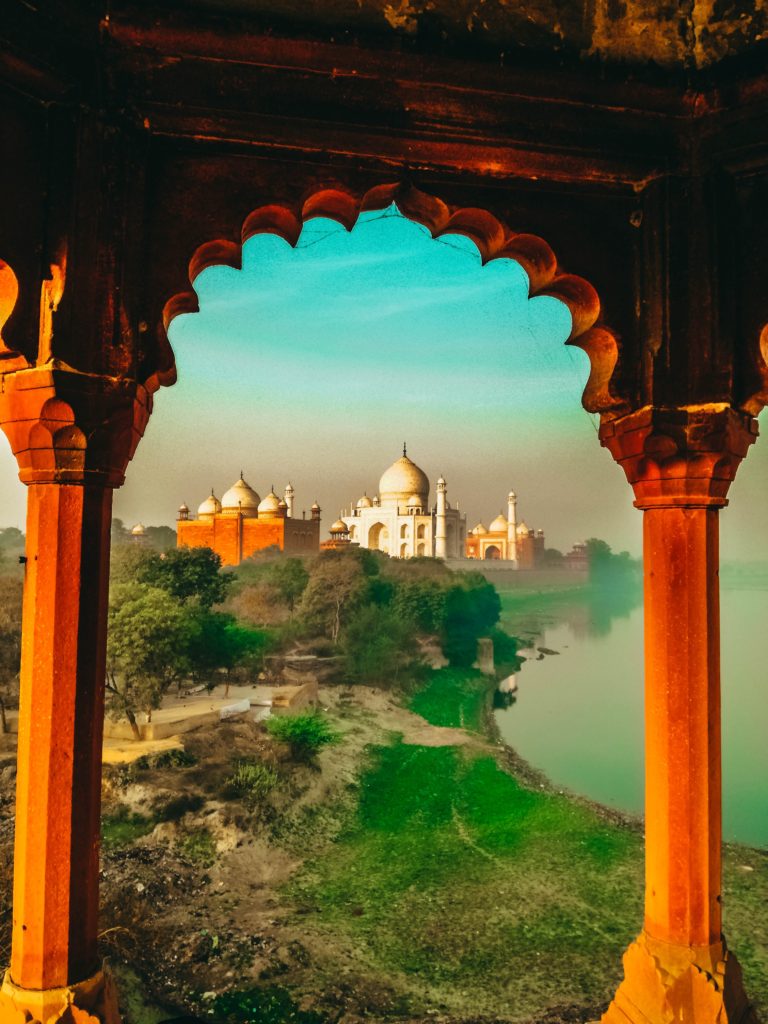
Jaipur
Jaipur is the capital and the biggest city of the Indian territory of Rajasthan. Starting in 2011, the city had a populace of 3.1 million, making it the 10th most crowded city in the country. Jaipur is otherwise called the Pink City, because of the prevailing shading plan of its structures. It is found 268 km (167 miles) from the public capital New Delhi.
Jaipur was established in 1727 by the Rajput ruler Jai Singh II, the leader of Amer, after whom the city is named. It was one of the soonest arranged urban communities of current India, planned by Vidyadhar Bhattacharya. During the British Colonial time frame, the city filled in as the capital of Jaipur State.
After freedom in 1947, Jaipur was made the capital of the recently shaped province of Rajasthan.
Jaipur is a famous traveler objective in India and structures a piece of the west Golden Triangle vacationer circuit alongside Delhi and Agra (240 km, 149 mi).
It additionally fills in as a door to other traveler objections in Rajasthan, for example, Jodhpur (348 km, 216 mi), Jaisalmer (571 km, 355 mi), Udaipur (421 km, 262 mi), Kota (252 km, 156 mi), and Mount Abu (520 km, 323 mi). Jaipur has found 616 km from Shimla.
On 6 July 2019, UNESCO World Heritage Committee recorded Jaipur as the “Pink City of India” among its World Heritage Sites. The city is additionally home to the UNESCO World Heritage Sites Amber Fort and Jantar Mantar.
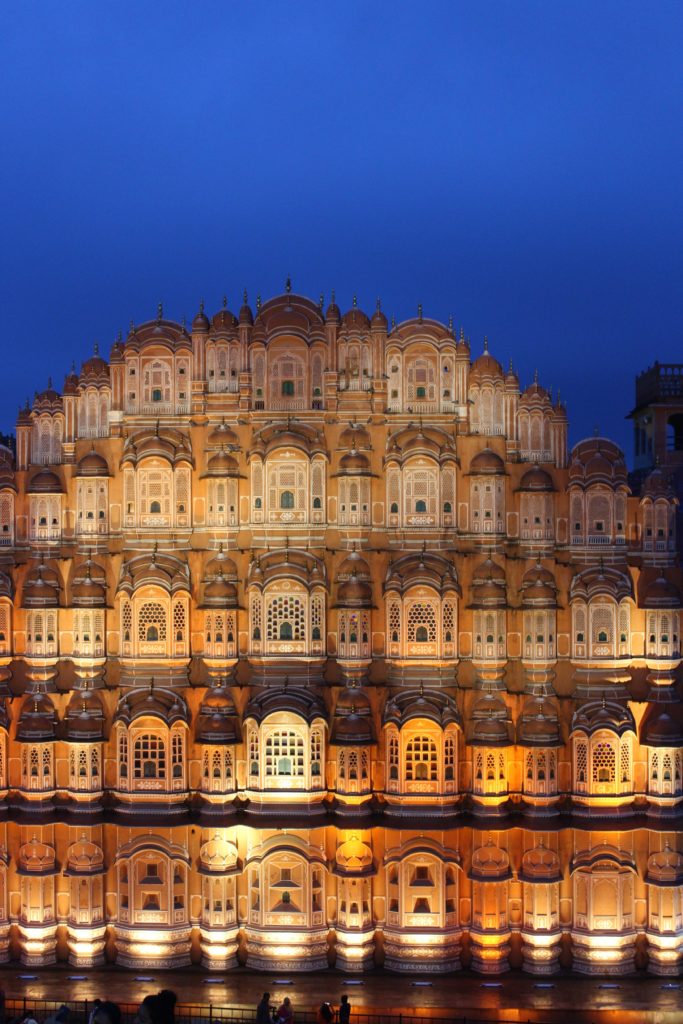
Pushkar
Pushkar is a city in the Ajmer district in the Indian state of Rajasthan. It is situated about 10 km (6.2 mi) northwest of Ajmer and about 150 kilometers (93 mi) southwest of Jaipur. It is a pilgrimage site for Hindus and Sikhs.
Pushkar has many temples. Most of the temples and ghats in Pushkar are from the 18th century and later because many temples were destroyed during the Muslim conquests in the area. Subsequently, the destroyed temples were rebuilt.
The most famous among Pushkar temples is the red spired Brahma Temple built by Pushkar, who is the father of Vedmata Gayatri, who was a Chechi Kanya married to Lord Brahma. It is considered a sacred city by the Hindus, particularly in Shaktism, and meat and egg consumption are forbidden in the city. Pushkar is located on the shore of Pushkar Lake, which has many ghats where pilgrims bathe.
Pushkar is also significant for its Gurdwaras for Guru Nanak and Guru Gobind Singh. One of the bathing ghats is called Gobind ghat built by the Sikhs in the memory of Guru Gobind Singh.
Pushkar is famous for its annual fair (Pushkar Camel Fair) featuring a trading fete of cattle, horses, and camels. It is held over seven days in autumn marking Kartika Purnima according to the Hindu calendar (Kartik (month), October, or November). It attracts nearly 200,000 people. In 1998, Pushkar hosted about 1 million domestic (95%) and international tourists over the year.
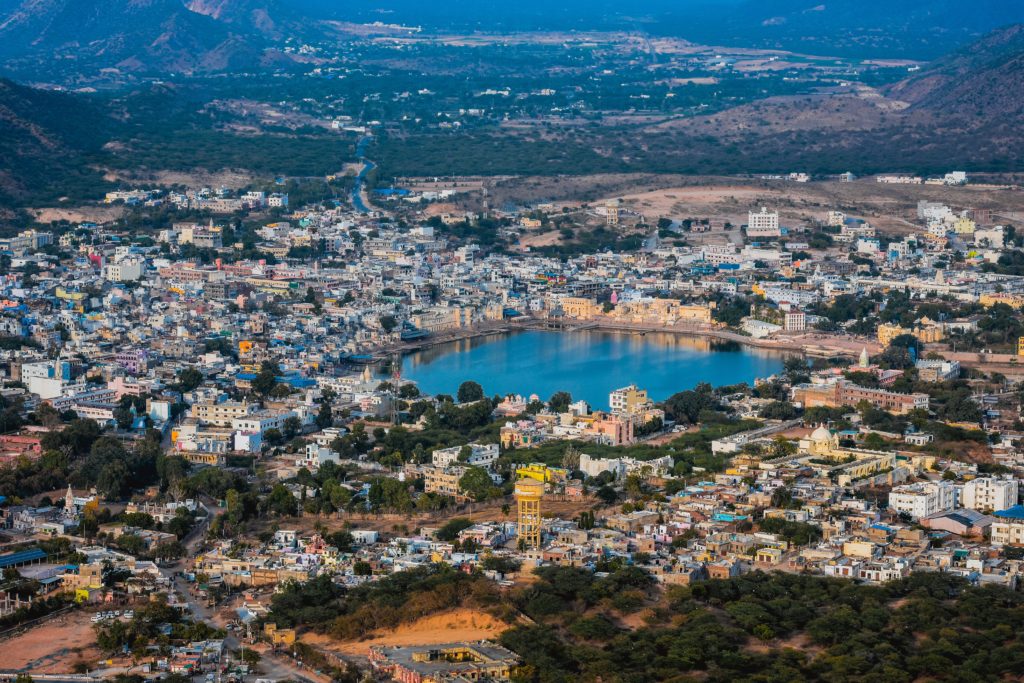
Itinerary
ARR. AT DELHI AIRPORT AND PROCEED TO AGRA. ENROUTE VISIT SIKANDRA, ON ARRIVAL IN AGRA CHECK INTO HOTEL. LATE EVENING VISIT THE AGRA FORT. OVERNIGHT STAY AT AGRA.
0630HRS VISIT THE TAJ MAHAL FOR A BEAUTIFUL VIEW AT SUNRISE. AFTER BREAKFAST, DEPART FOR JAIPUR. ENROUTE VISIT THE FAMOUS FATEHPUR SIKRI. ARRIVE LATE EVENING IN JAIPUR AND CHECK-INTO HOTEL. OVERNIGHT STAY AT JAIPUR
AFTER BREAKFAST DEP. FOR FULL DAY SIGHTSEEING OF JAIPUR, VISITING THE AMBER FORT, CITY PALACE, JANTAR MANTAR, JAL MAHAL AND HAWA MAHAL. EVENING FREE FOR LOCAL MARKET AND RESTAURANTS. OVERNIGHT STAY AT JAIPUR.
AFTER BREAKFAST DEP. FOR PUSHKAR ON ARRIVAL IN PUSHKAR CHK-IN HOTEL. LATE AFTERNOON VISIT THE HOLY CITY OF PUSHKAR AND ALSO ENJOY THE CAMEL SAFARI. OVERNIGHT STAY AT PUSHKAR
EARLY MORNING VISIT THE LORD BRAHMA TEMPLE, AFTER DARSHAN DEP. FOR DELHI. LATE AFTERNOON ARRIVE IN DELHI CHECK-IN HOTEL. OVER NIGHT STAY AT DELHI
AFTER BREAKFAST 0900 HRS DEP. FOR DELHI SIGHTSEEING TO VISIT THE INDIA GATE, PRESIDENT'S PALACE, AND THE PARLIAMENT HOUSE, LOTUS TEMPLE, HUMAYUN’S TOMB, QUTAB MINAR AND AKSHARDHAM TEMPLE. EVENING DEPART FOR THE AIRPORT FOR CONNECTING FLIGHT FOR ONWARDS DESTINATION. TOUR ENDS.

